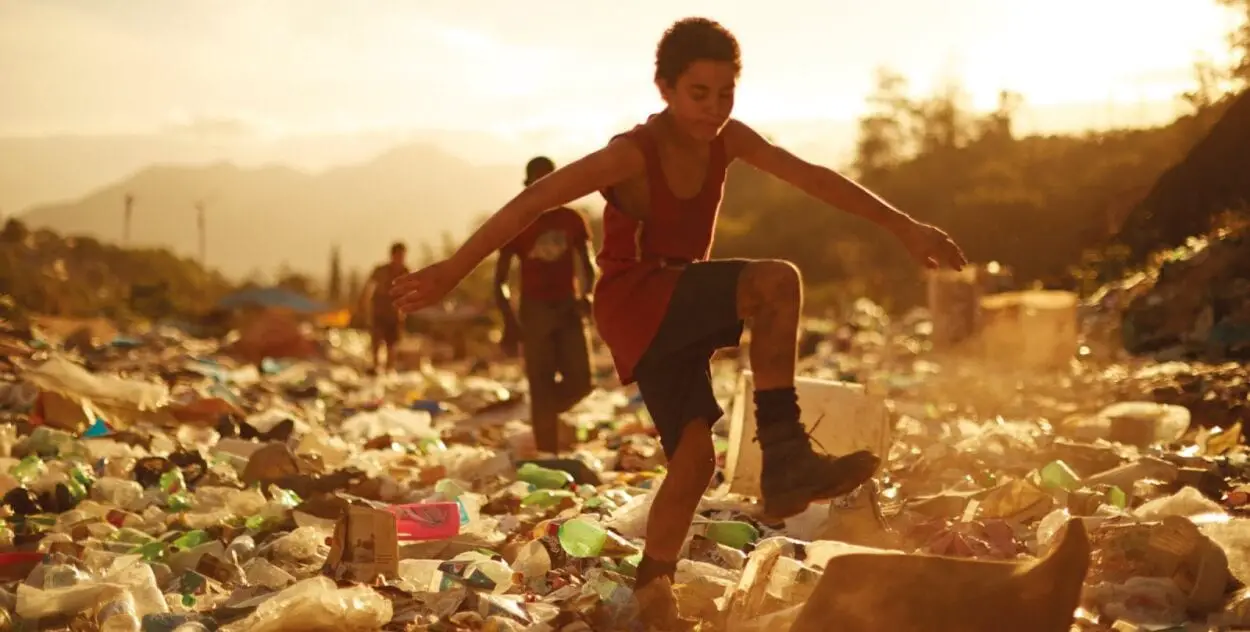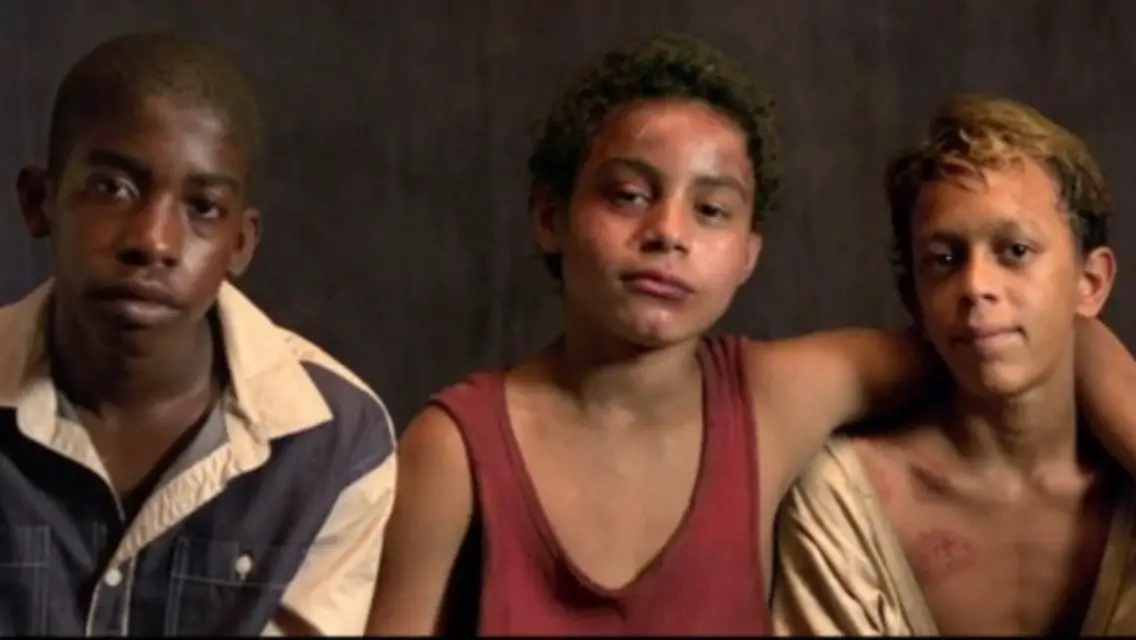In 2014 Stephen Daldry brought life to Richard Curtis’ adaptation of Andy Mulligan’s novel Trash from four years prior. The novel in question centers around three young boys in Rio De Janeiro who happen upon a wallet containing something of great value. This discovery entangles the boys in a web of corruption and sets them on a path to become the unlikeliest of whistle–blowers. The story Daldry tells is not just about abject poverty or the struggle of the people who have been pushed to the lowest rung of the social ladder. What he does, is show how it is often the ones who have the least who give the most in the name of what is right. Trash shows us that even though these boys have been discarded by their own people, they will put it all on the line to uncover the deep, dark secret that cost a man his life.
Although at first glance you may think Trash shares a lot of the same DNA with the Brazilian masterpiece City of God, on closer examination, the two couldn’t be any more different. The major difference between the two is the tone that Daldry sets. The director of Trash favored a more wide–eyed adventure feel instead of the bleaker nature of City of God. Daldry was trying to tell a joyous story, surrounded by bleakness but somehow unaffected by it. These three friends live happily among the ruins of their homeland, they are thankful for what they have, no matter how little that is. They show a true appreciation for life and this is extremely important to making the narrative believable.
If the three boys had suffered from nihilistic tendencies or apathy for the world they live, in they wouldn’t have set out on their mission in the first place, they would have handed over the wallet for the reward. However, they see that there is greater value to be had from what the wallet contains, not just in terms of money but in terms of truth and justice. This child–like wonder and how the boys interact with the world around them gives Trash a similar feel to Danny Boyle’s Slumdog Millionaire. The similarities in the characters’ outlook on life are not all these two captivating movies share in common. Trash and Slumdog Millionaire share an incredible vibrancy, the energy of their characters and the surroundings they call home just pop right off the screen.

They both convey the homes of their characters in all their eclectic glory, giving us a sense of how a child views these beautiful but ultimately broken places. The three boys, Raphael, Gardo, and Rato had every reason to give up on the world but they didn’t give in to the corruption or darkness of their environment, they learning from it instead. They figured out how to navigate the complicated nature of their homes and the situations they find themselves in. Throughout their journey, they learn what it takes to not only survive but thrive and even though they do play the game, they do not allow themselves to become corrupted by it.
The young trio remains good no matter what, it is like I mentioned earlier, they view the world with childlike wonder, and this gives Trash a more adventurous tone. They hold onto their childhood, they are not forced to grow up too quickly by the events of the story and that childlike wonder remains intact, they are not spoiled or sullied by what has transpired. If anything they have become better because of it, they push back against the ever–growing tide. The three boys not only risk it all in the name of justice, they also share their wealth with the other poverty stricken people that call the trash heap home, showing us that even though they wanted to leave, they will never forget their roots.
At this moment they become Robin Hood figures who they stole from the rich to give to the poor. It is a beautifully shot climax that is paid off with maximum effect due to the performances of the child actors who, as throughout the movie, play the moment with sublime subtlety. Even though Trash has Hollywood alumns Martin Sheen, Rooney Mara, and Wagner Moura in supporting roles, Wagner Moura almost steals the show entirely, he is a truly magnificent actor and plays Jose Angelo to perfection. Although Moura is immense as the tortured justice seeker Angelo, it is the three young Brazilian debutantes in the roles of the protagonists that carry most of the movie’s narrative weight.

Rickson Tevez, Eduardo Luis, and Gabriel Weinstein add authenticity to both the story and to the characters of Raphael, Gardo and Rato. This brings a little rawness to the feel of Trash and creates an interesting balance with the rest of the overall tone. This added realism helps remind us that even though Trash has an upbeat adventurous tone, it has some very important social commentary at its core. Daldry does an excellent job of conveying to us the true depths of poverty in the region, while also showing us how endemic corruption is both in law enforcement and in the political arena. That, unfortunately the ones who fight against this infectious criminality in the justice system are oftentimes trounced by it, either ending up incarcerated like Clemente or assassinated like Jose Angelo.
Daldry shines a spotlight on not just the corrupt acts but also the people they affect, he goes through great pains to put a face to every action. He tells not just a grand story but also very the personal ones that are intertwined with the greater scheme of things. Showing that behind these gigantic events, there are real stories filled with real people who are feeling the ramifications of what has transpired and that have risked all they have to do the right thing, no matter the personal consequences. The real truth seekers will never stop in their search for justice no matter the obstacles, and Trash conveys this in the most beautiful way.
The scene where Gardo recites Jose Angelo’s message to Clemente in prison is breathtaking in not only its beauty, but also the technique that is used to bring it to life. The way Clemente interacts with Gardo is as if he is seeing Jose Angelo come alive in him for one last time. It is an astonishing scene that encapsulates everything that makes Trash so good. It is heartbreakingly beautiful, and utterly captivating in its execution. Just like the rest of the piece, it is poetry in motion, a joyous celebration of life and what is right even in the toughest of circumstances. These are the two constants at Trash’s core, and are incredibly powerful messages that should resonate with all of us.




